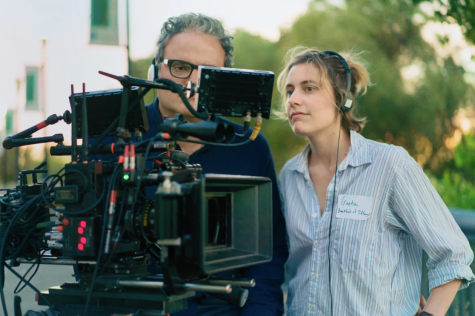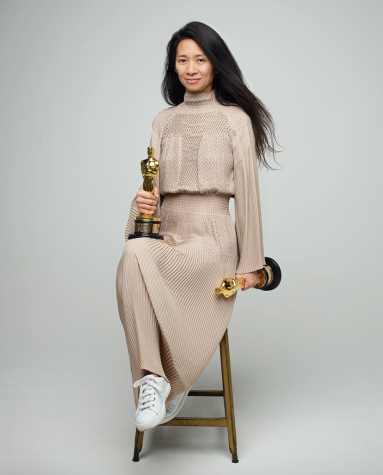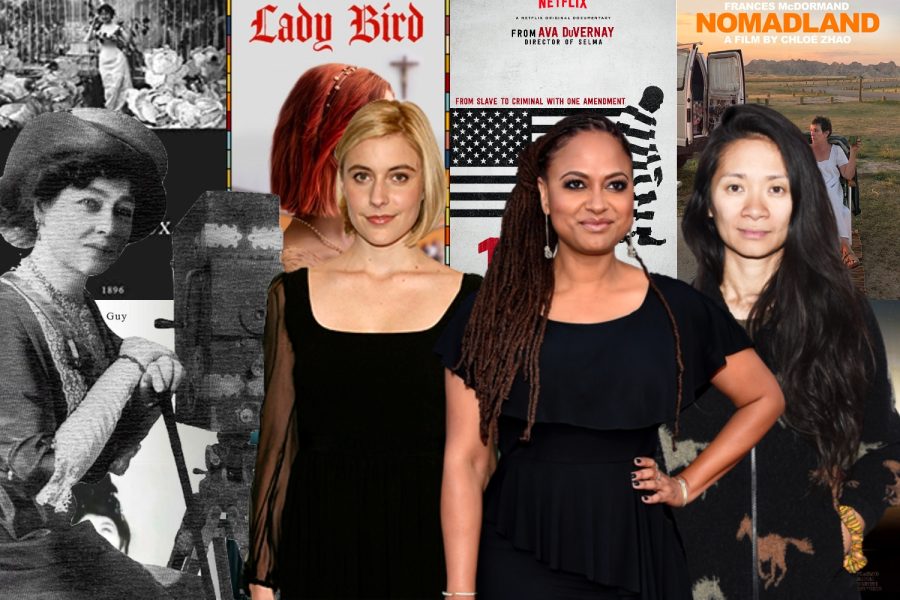Pioneering female filmmakers forge paths to the future
Sacred Heart film students find inspiration in the creative determination of role models.
Female directors forge their own paths in the film industry.
Ms. Alice Guy-Blaché brought lights, cameras, and feminist action to the film industry in the nineteenth century as the first woman director. Ms. Greta Gerwig, Ms. Ava DuVernay, and Ms. Chloé Zhao continued her legacy into the twentieth century. At Sacred Heart Greenwich, senior Advika Dushyanth, 2023 Film Festival co-host and co-chair, reflects on her duty to carry on the mission of historical female filmmakers.
Born in France in 1873, Ms. Guy-Blaché launched her filmmaking career as a secretary for Mr. Léon Gaumont, one of the first manufacturers of motion-picture cameras. She made her first film, “La Fée aux Choux,” in 1896 after convincing Mr. Gaumont that it would effectively showcase his cameras. Ms. Guy-Blaché went on to create 1,000 short films throughout her career, according to The New York Times.
Ms. Guy-Blaché pioneered a new area of work for women, as she was the only female filmmaker of her time, according to wfpp.columbia.edu. A 1911 article in Motion Picture News emphasizes Ms. Guy-Blaché’s talents and resourcefulness.
“Madame Blache is a wonderful woman, having business ability as well as artistic ability,” Motion Picture News wrote, according to books.googleusercontent.com. “She is one fine example of what a woman can do if given a square chance in life. She is both dignified and gracious, lending the dignity of her personality to the manipulation of the company of which she is the head.”
Nearly a century after Ms. Guy-Blaché’s work, filmmaker Ms. Gerwig released her 2018 directorial debut, Lady Bird. This film follows Lady Bird as she navigates her teen years and relationship with her mother. Ms. Gerwig received five 2018 Academy Award nominations for the film. Still, Ms. Gerwig’s biggest achievement was her nomination for Best Director, which made her the fifth woman that the Academy of Motion Picture Arts and Sciences (AMPAS) recognized in this category in the 90 years of the awards, according to time.com.
Ms. Gerwig believes Hollywood has extensive work to do to support female filmmakers.

“Right now there’s a lot of desire to hire female directors because of the attention that’s been placed on the lack of women directors by organizations like Time’s Up,” Ms. Gerwig said, according to cncb.com. “Until it’s 50/50, I think putting pressure on studios to hire women and producers to get behind female directed and written films is really important. I think it’s Gloria Steinem who said: ‘You know you’re in power when you’re the noun, not the adjective.’ You’re not a woman director, you’re a director.”
Ms. Zhao received several accolades for her 2020 film Nomadland, including Best Director at the 2021 Oscars, making her the second woman, the first woman of color, and the first Chinese woman to receive the honor, according to The New York Times. Nomadland also earned Ms. Zhao Best Picture, making her the first woman of color to win the award, according to The New York Times.

Fourteen percent of 2018 top films came from Black directors, and of those creators, Ms. DuVernay was the only Black woman, according to cncb.com. Ms. DuVernay made history as the first Black woman to win Best Director for her film Middle of Nowhere at the 2012 Sundance Film Festival. Additionally, she was the first Black woman to receive a nomination for Best Director at the 2014 Golden Globe Awards and for Best Picture at the 2014 Academy Awards, according to womenshistory.org. Ms. DuVernay acknowledges the additional barriers she faces as a Black woman in a predominantly white male field.
“For anyone who is working in a house that was not built for them, at times it is not particularly welcoming,” Ms. DuVernay said, according to time.com. “There are ways to work within a system. There are like-minded people who understand the power of their privilege and understand that they can open up opportunities for others. But largely not. So, it’s about making sure we push against tokenism and vain attempts at diversity, and push for different points of view to be centered, valued and seen.”
Advika started taking filmmaking at Sacred Heart her freshman year. In the future, she hopes to increase South Asian representation in the film industry and reduce stereotypes to holistically present diverse ethnicities and cultures. She believes the industry shies away from addressing humans as beings who make mistakes and experience challenges. Seeing other female filmmakers make a difference in the field motivates Advika.

“Women who have made a name for themselves in film are truly inspiring to me,” Advika said. “They have managed to pave a way for opportunity and success for young girls who have a passion for film and storytelling. I think being able to see women in the film industry motivates young girls to fight for their dreams regardless of the gender prejudice they might face.”
Ms. DuVernay has a similar mission. Her 2014 film, Selma, discusses the trials Black Americans faced in Alabama throughout the 1960s. In 2016, she received praise for her film, 13th, which delves into the history of racial injustice in America, focusing on its perpetuation within the prison system. Ms. DuVernay believes she makes best use of her talents when she tells meaningful stories and make a change.
“It links to the idea that an artist and an activist are not so far apart,” Ms. DuVernay said, according to The New York Times. “Whether you call yourself an activist or not, artists use their imagination to envision a world that does not exist and make it so. Activists use their imagination to envision a world that does not exist and make it so.”
Featured Image by Jacqueline Franco ’23

After completing her first year as a Staff Writer, Jackie is thrilled to return for her second year on the King Street Chronicle as Content Editor, News...


